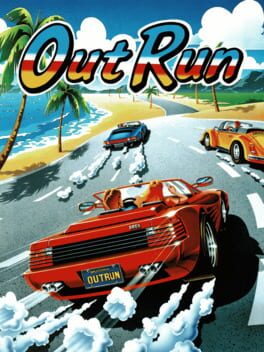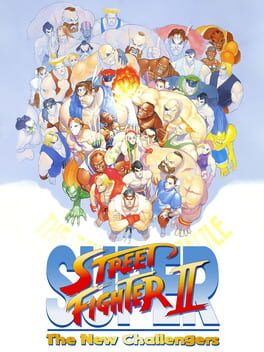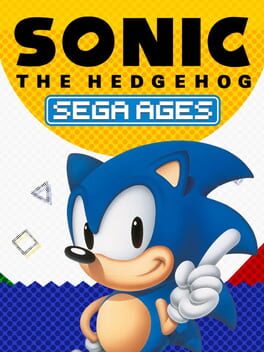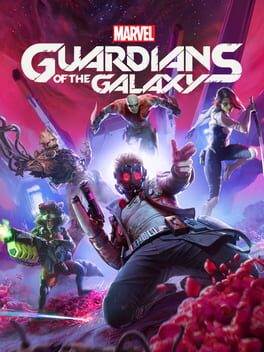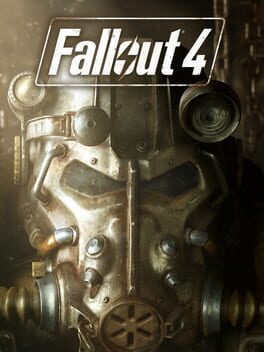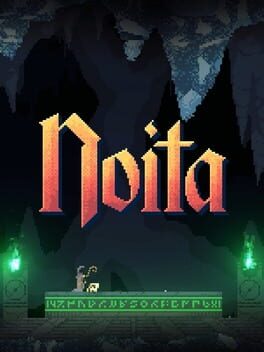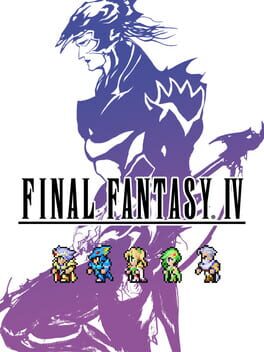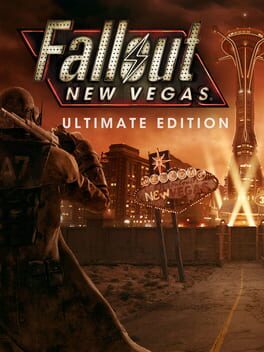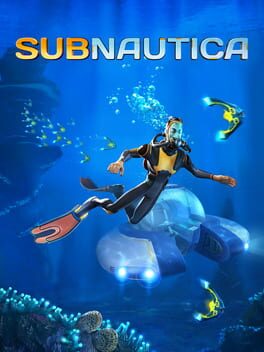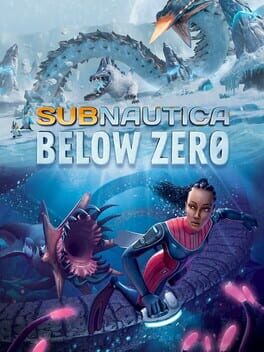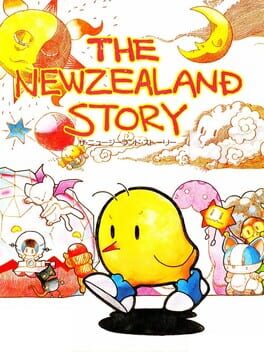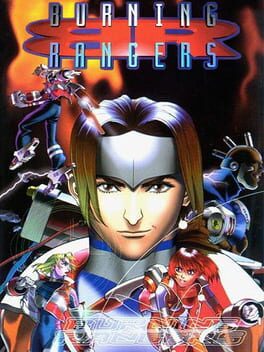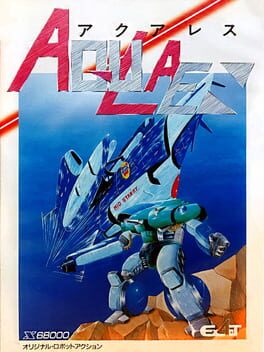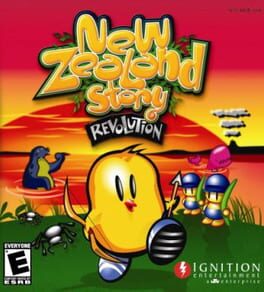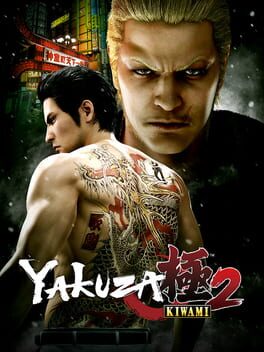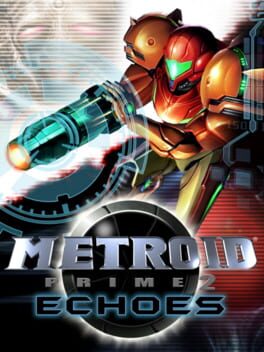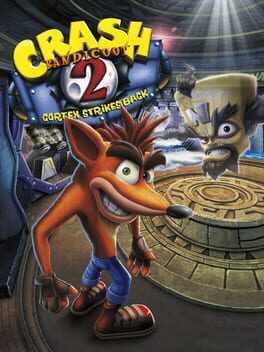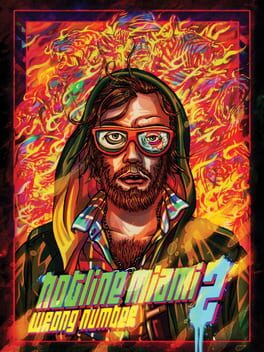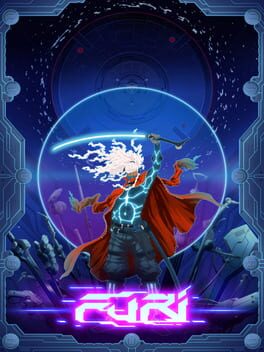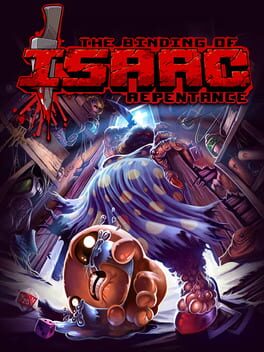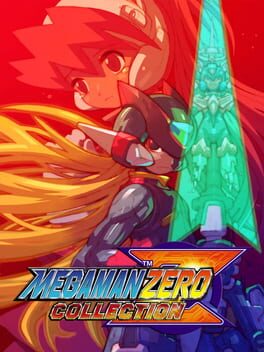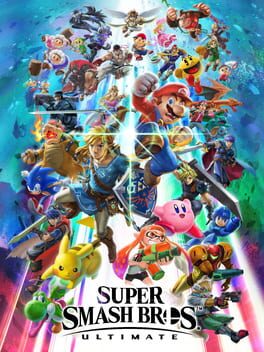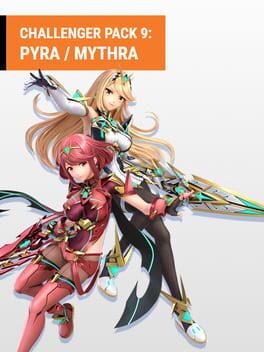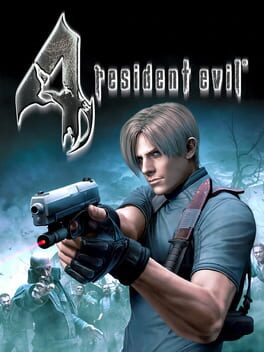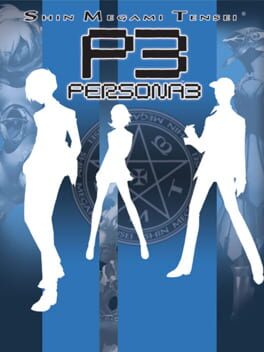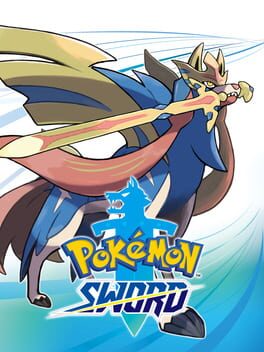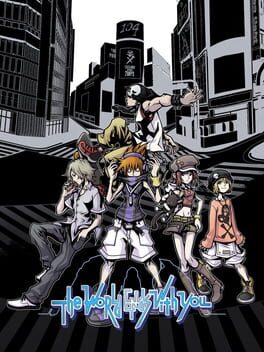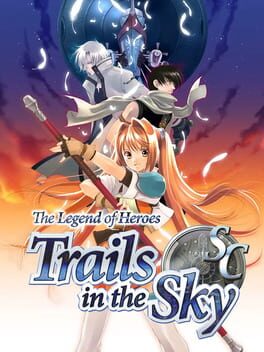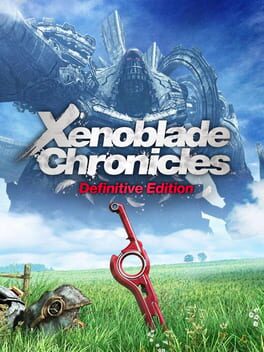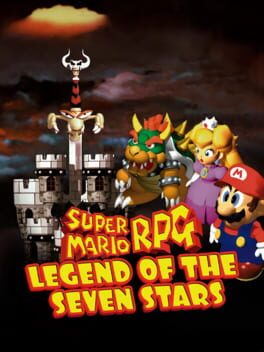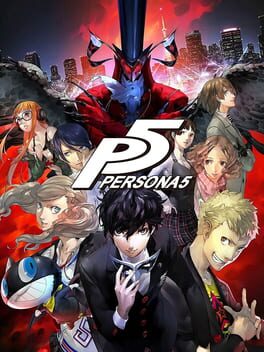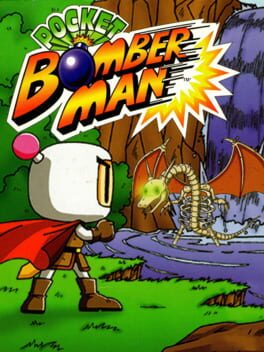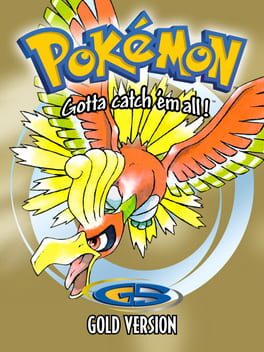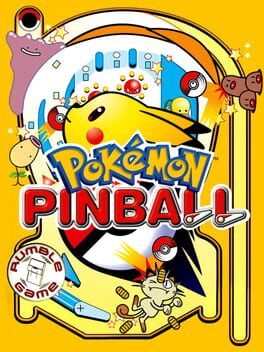Depper
487 reviews liked by Depper
Castlevania
1986
Felizmente nunca me senti mal por preferir conseguir jogar a enfrentar grandes desafios, porque foi graças ao R35S, que chegou com a versão com easy mode do FAMICON, que pude zerar Castlevania – no modo normal eu não conseguia passar do primeiro boss... imagina do resto... esse jogo é spam de monstro toda hora...
É divertido! Bem curtinho mesmo, com visuais incríveis pra época e uma trilha sonora muito legal. Os controles... deixam a desejar, e é bastante frustrante usar um personagem com movimentos tão limitados. Gostaria muito que fosse jogável (pra mim) sem precisar apelar pra um modo meio que ridiculamente fácil. Mas deu pra conhecer, foi show de bola! Ou melhor: show de cabeça rolando? (Queria fazer uma piadinha aqui, mas não sei se funcionou.)
É divertido! Bem curtinho mesmo, com visuais incríveis pra época e uma trilha sonora muito legal. Os controles... deixam a desejar, e é bastante frustrante usar um personagem com movimentos tão limitados. Gostaria muito que fosse jogável (pra mim) sem precisar apelar pra um modo meio que ridiculamente fácil. Mas deu pra conhecer, foi show de bola! Ou melhor: show de cabeça rolando? (Queria fazer uma piadinha aqui, mas não sei se funcionou.)
"Two steps forward, one step back" is how I would describe Metroid II: Return of Samus. for every genuine improvement made to the original game, and there are a lot, there's an unfortunate compromise made due to the inherent limitations of the GameBoy.
let's start with the improvements. for one, Metroid II is a lot less frustrating than its predecessor for multiple reasons. firstly, Samus is a lot less slipery, and so she no longer slips after landing. controlling her is snappy and responsive, and the floaty jump means it's very easy to land where you want to. the newly added abilities to crouch before entering the morph ball as well as shooting downwards are a god send and singlehandedly make the controls a lot smoother.
secondly, the level design is a lot less dickish. there's no massive dead ends, platforms are wider so they're easier to land on, no beginner's trap, as well as a lot more landmarks and unique rooms, meaning navigation is easier and you're less likely to get truly lost. Metroid II, unlike the first game, never purposefully wastes your time, which is greatly appreciated. this, coupled with the addition of save stations and energy/missile recharges, while few and far between and the latter being hidden, means the game overall is way easier.
additionally, enemies deal less damage, and due to the capacity of the GameBoy, creatures can't fill the screen without setting the poor console on fire, so there's less enemies and you're never overwhelmed. this allows creature design to also be more detailed ironically enough, as sprites are generally a lot bigger due to the reduced screen size. this means there's no slowdowns which is also appreciated, the game runs at a crisp 59.7 FPS and never dropped once. the only true challenge comes from the titular Metroids who can be pretty difficult to fight especially when they surprise you, though they're never unfair. I also appreciate the added enemy variety. the wildlife of SR388 all look and act distinct from one and another, a lucky side effect of the GameBoy not having color.
while in the first game, Samus started as weak and grew powerful, here Samus starts powerful and eventually becomes unstoppable thanks to the reduced damage and new abilities like the space jump, spider ball and spring ball which all make exploration a breeze. there's also the fact that enemies outside of Metroids never really attack you, they just kind of exist and accidentally are in your way, which I really like as a story detail: the only hostile entities on SR388 are the Metroids and Samus herself. the rest are merely living. smarter people have already analyzed the story which you can read if you're interested in, but I like how Samus rescues the one baby Metroid. it humanizes her in an unexpected way.
now, there are a few elements that are transferred over from the first Metroid, mainly the lack of a map, which while not as detrimental this time around due to the improved level design, still means it's easy to get lost. the final boss is also a frustrating damage sponge and an unnecessary difficulty spike, tho it doesn't throw a billion projectiles at you which is a definitive upgrade. you also can't have more than one beam type, meaning I was just using the ice beam for 95% of the game and renders all other beams functionally useless, which is a shame. there's also more energy tanks and beam stations that you can collect which is just a strange move that I don't fully understand.
now for the downgrades. notably, I don't think the screen crunch is too much of a problem here, since the game designers were smart and built the game around it. you're never unfairly attacked by enemies you couldn't see coming, and it's not disorienting. it replicates the feeling of exploring a dark, uncharted planet. I would've liked a bit more screen space but it's not the end of the world.
no, my biggest problem with Metroid II is that for 90% of the game, there's no music, and I don't know why! the music that is present is very good, and I know they could've made oppressing ambiant tracks because the original game had songs like that. here however, you're accompanied by silence most of the time which is a shame.
there's also no color at all, which just makes the environment feel very repetitive and more confusing than necessary. the game is also shorter and more linear, which means you don't really get to use your abilities to their full extent, rendering them kind of superfluous which is never something you want. the game is also very repetitive, since it follows the exact same formula with no real surprise.
overall though, I have to say I was pleasantly surprised by Metroid II! I consider it an improvement over the first game, with most of its flaws coming from the inherent limitations of it being a GameBoy game. this makes me very excited to see what Super Metroid is capable of, especially considering everything I've heard about it.
let's start with the improvements. for one, Metroid II is a lot less frustrating than its predecessor for multiple reasons. firstly, Samus is a lot less slipery, and so she no longer slips after landing. controlling her is snappy and responsive, and the floaty jump means it's very easy to land where you want to. the newly added abilities to crouch before entering the morph ball as well as shooting downwards are a god send and singlehandedly make the controls a lot smoother.
secondly, the level design is a lot less dickish. there's no massive dead ends, platforms are wider so they're easier to land on, no beginner's trap, as well as a lot more landmarks and unique rooms, meaning navigation is easier and you're less likely to get truly lost. Metroid II, unlike the first game, never purposefully wastes your time, which is greatly appreciated. this, coupled with the addition of save stations and energy/missile recharges, while few and far between and the latter being hidden, means the game overall is way easier.
additionally, enemies deal less damage, and due to the capacity of the GameBoy, creatures can't fill the screen without setting the poor console on fire, so there's less enemies and you're never overwhelmed. this allows creature design to also be more detailed ironically enough, as sprites are generally a lot bigger due to the reduced screen size. this means there's no slowdowns which is also appreciated, the game runs at a crisp 59.7 FPS and never dropped once. the only true challenge comes from the titular Metroids who can be pretty difficult to fight especially when they surprise you, though they're never unfair. I also appreciate the added enemy variety. the wildlife of SR388 all look and act distinct from one and another, a lucky side effect of the GameBoy not having color.
while in the first game, Samus started as weak and grew powerful, here Samus starts powerful and eventually becomes unstoppable thanks to the reduced damage and new abilities like the space jump, spider ball and spring ball which all make exploration a breeze. there's also the fact that enemies outside of Metroids never really attack you, they just kind of exist and accidentally are in your way, which I really like as a story detail: the only hostile entities on SR388 are the Metroids and Samus herself. the rest are merely living. smarter people have already analyzed the story which you can read if you're interested in, but I like how Samus rescues the one baby Metroid. it humanizes her in an unexpected way.
now, there are a few elements that are transferred over from the first Metroid, mainly the lack of a map, which while not as detrimental this time around due to the improved level design, still means it's easy to get lost. the final boss is also a frustrating damage sponge and an unnecessary difficulty spike, tho it doesn't throw a billion projectiles at you which is a definitive upgrade. you also can't have more than one beam type, meaning I was just using the ice beam for 95% of the game and renders all other beams functionally useless, which is a shame. there's also more energy tanks and beam stations that you can collect which is just a strange move that I don't fully understand.
now for the downgrades. notably, I don't think the screen crunch is too much of a problem here, since the game designers were smart and built the game around it. you're never unfairly attacked by enemies you couldn't see coming, and it's not disorienting. it replicates the feeling of exploring a dark, uncharted planet. I would've liked a bit more screen space but it's not the end of the world.
no, my biggest problem with Metroid II is that for 90% of the game, there's no music, and I don't know why! the music that is present is very good, and I know they could've made oppressing ambiant tracks because the original game had songs like that. here however, you're accompanied by silence most of the time which is a shame.
there's also no color at all, which just makes the environment feel very repetitive and more confusing than necessary. the game is also shorter and more linear, which means you don't really get to use your abilities to their full extent, rendering them kind of superfluous which is never something you want. the game is also very repetitive, since it follows the exact same formula with no real surprise.
overall though, I have to say I was pleasantly surprised by Metroid II! I consider it an improvement over the first game, with most of its flaws coming from the inherent limitations of it being a GameBoy game. this makes me very excited to see what Super Metroid is capable of, especially considering everything I've heard about it.
Red Dead Redemption
2010
OutRun
1986
Veredito: O fliperama ideal para quem gosta de dirigir.
Outrun é EXATAMENTE como eu imagino a tara por dirigir. Não sou aficcionado pelo assunto (sei nem diferenciar um Palio de um Clio, falo logo), meu negócio é transporte público e bicicleta/skate, mas gostei bastante de Outrun, mesmo não sendo o público-alvo. Ele passa exatamente a sensação que, imagino, os aficcionados por carros tenham numa rodovia livre, ainda mais nos anos 1980 que é quando ele lançou: velocidade, uma garota bonita do lado, vento batendo no cabelo, passando por várias paisagens diferentes e com aquela sensação de liberdade.
Na verdade, gostei tanto que adoraria que tivesse uma máquina de Outrun perto de casa, porque ele é um EXCELENTE jogo de fliperama. O espírito arcade está em todo canto, e é muito bem feitinho: a vontade de quebrar recordes, de competir com os amigos por um espaço no quadro de pontos, a sensação de "cheguei QUASE lá, na próxima eu consigo!" a cada derrota. É sério, fico tristão desses fliperamas BONS PRA CACETE não existirem mais por aí só porque são velhos. Não é um jogo de corrida como estamos acostumados, você não tem que correr contra ninguém. Só contra o relógio. Consiga chegar a tempo nos 5 checkpoints do jogo, em qualquer caminho que você escolher, e você zera.
Acredite, é mais difícil do que parece. Mas nunca é injusto.
Outrun é EXATAMENTE como eu imagino a tara por dirigir. Não sou aficcionado pelo assunto (sei nem diferenciar um Palio de um Clio, falo logo), meu negócio é transporte público e bicicleta/skate, mas gostei bastante de Outrun, mesmo não sendo o público-alvo. Ele passa exatamente a sensação que, imagino, os aficcionados por carros tenham numa rodovia livre, ainda mais nos anos 1980 que é quando ele lançou: velocidade, uma garota bonita do lado, vento batendo no cabelo, passando por várias paisagens diferentes e com aquela sensação de liberdade.
Na verdade, gostei tanto que adoraria que tivesse uma máquina de Outrun perto de casa, porque ele é um EXCELENTE jogo de fliperama. O espírito arcade está em todo canto, e é muito bem feitinho: a vontade de quebrar recordes, de competir com os amigos por um espaço no quadro de pontos, a sensação de "cheguei QUASE lá, na próxima eu consigo!" a cada derrota. É sério, fico tristão desses fliperamas BONS PRA CACETE não existirem mais por aí só porque são velhos. Não é um jogo de corrida como estamos acostumados, você não tem que correr contra ninguém. Só contra o relógio. Consiga chegar a tempo nos 5 checkpoints do jogo, em qualquer caminho que você escolher, e você zera.
Acredite, é mais difícil do que parece. Mas nunca é injusto.
Ainda quero zerar esse aqui algum dia, nem que só pela nostalgia da coisa toda, mas que jogo frustrante! Principalmente em comparação a jogos posteriores da franquia – como o 3rd Strike, que está na mesma coleção pro Switch –, a sensação aqui é de que você não consegue fazer nada na luta. Ou então eu sou muito ruim. Ou as duas coisas.
Foi com muita garra, perseverança e dependência da possibilidade de salvar a qualquer momento do jogo que eu consegui terminar esse aqui. É fofo e bem divertido! Mas as fases são mesmo desnecessariamente difíceis, não tem como. O Eggman em si quase nunca é mais pesado que o que veio antes dele, e talvez jogar com outro controle que não o do Switch no modo portátil tivesse me ajudado um tanto.
I got this hidden gem from GameStop for 15 bucks. I took it home, and I was blown away. Some people seem to dislike the gameplay, but I don’t really see that problem. The strategy of trying to command a team in the heat of battle is a fun loop, and I was never really bored with it. The story holds on, And never let you go. This is one of three games that got me to cry. But the game isn’t perfect. Some of the platforming could’ve been shortened. Luckily, that takes up such a small portion, that it doesn’t really affect the score.
Fallout 4
2015
tentei logo quando saiu no ps4, tentei na minha epoca de xbox one anos depois e tentei agora pós assistir o primeiro ep da série que me animou muito pra jogar.
mas comigo o sentimento é sempre o mesmo, um começo de jogo curioso e empolgante que corta todo seu entusiasmo a partir do momento em que seu personagem vai pra superfície.
sério, eu quase durmo com os diálogos chatos de NPC's sem vida que só tão seguindo um script.
de verdade, eu tenho inveja de quem consegue mergulhar na imersão desse jogo, até ia falar que Fallout nao é pra mim, mas me recordei que me diverti por semanas jogando o New Vegas no PS3...então acredito que meu problema é com o 4 mesmo.
por enquano não senti que é um "Adeus, até nunca!"
algo ainda me diz que eu vou conseguir jogar esse game, e que talvez seja bom, assim como eu insisti e me apaixonei por Skyrim
mas comigo o sentimento é sempre o mesmo, um começo de jogo curioso e empolgante que corta todo seu entusiasmo a partir do momento em que seu personagem vai pra superfície.
sério, eu quase durmo com os diálogos chatos de NPC's sem vida que só tão seguindo um script.
de verdade, eu tenho inveja de quem consegue mergulhar na imersão desse jogo, até ia falar que Fallout nao é pra mim, mas me recordei que me diverti por semanas jogando o New Vegas no PS3...então acredito que meu problema é com o 4 mesmo.
por enquano não senti que é um "Adeus, até nunca!"
algo ainda me diz que eu vou conseguir jogar esse game, e que talvez seja bom, assim como eu insisti e me apaixonei por Skyrim
Super Metroid
1994
You know what? This isn’t just Super Metroid. This is Superb Metroid!
Despite having played several other metroidvanias in the past, I never actually tried to delve into one of the franchises that gave name to the genre, mostly because at the time I had a general avoidance of older games due to thinking they could have “aged poorly”…
But here’s the kicker! That past version of me from 2021/2022? HE IS FUCKING GONE (for the most part)! And it’s about time I came back to a genre that I was obsessed with in the past in some capacity, by going all the way back to the game that started it all!
The NES, short for Nintendo Entertainment System, is a video game console that, while I admire it, I don’t really like the idea of going all the way back to actually playing those games more than theorizing about them, the biggest reason is that for some of the more well known titles in the NES, looking back at them with the power of hindsight, though not as obvious as it is with franchises like Ultima, most of them just planted the seeds for what would grow into full blown trees with later entries, some of them ended up growing fast enough that they are still fairly solid like Castlevania and Super Mario Bros, but for others like Final Fantasy or Metroid… Yeah, I’ll pass.
And speaking of Metroid, its seed would eventually grow, but only in the NES’s successor for the next generation, the Super Nintendo, however, the seed that had grown into a small sprout with Metroid 2 on the Game Boy, would very suddenly grow into a Big FuckingGun Tree, one so big that several people would eventually try their hands at getting as many fruits from there as humanly possible in a short amount of time, memorizing everything about the tree and finding out the most effective way to get through each branch and collect the most fruits as fast as they could, and to this day people still try their hands at such task, AKA speedrunning. But if that wasn’t enough, that tree would go on to inspire many, many other gardeners (or developers) to try and plant trees inspired by that one, even creating an entire genre (alongside Castlevania: Symphony of the Night) called Metroidvania. And yet, even if we try to ignore this game’s long-lasting cultural impact within gaming, this is still one of the medium’s finest touchstone classics.
But what makes Super Metroid so compelling in the first place? Well, there are many reasons for why, and by many, I do mean it.
Crateria: A Strong Introduction
As soon as Samus touch its foot on Zebes for the second first time, the game immediately manages to instill both a sense of curiosity and fear on the player, curiosity as it makes the player hooked and eager to explore this wonderful “new” planet, touching on the human desire to explore new worlds, and fear as the place seems completely empty of any life, as a foreboding track plays in the background, further accentuating the feeling of exploring the ruins of a desolate planet completely unknown to the player, not helped by the fact Samus just escaped from Ridley invading a research station to steal the Baby Metroid there, so on top of that there’s a sense of something lurking around in the shadows, waiting for your presence to then attack you. That’s until you get the Morph Ball where the first game ended, and something like that does in fact happen, and what was once ridded from life is now filled to the Brinstar brim with enemies ready to kill anything potentially invading Zebes.
Super Metroid nailed the introduction so hard it could probably pierce through marble pillars, not only by introducing some of the fundamental aspects of the core gameplay loop to the player, but also by excellently establishing Zebes as a setting in every way imaginable, but especially gameplay and presentation. And speaking of the latter…
Brinstar: A Phenomenal Presentation and Atmosphere
As it can be noticed in the first ten minutes of the game, the presentation is amazing!
First of all, this is one of the most visually impressive in the SNES, and that’s saying a lot. The graphical leap of the Super Nintendo, going from a 8-bit to a 16-bit console, really allowed the developers to bring Edson Samus Arantes, Zebes and its denizens to full life here, with the colorful yet dimly lit colors giving an extra edge to Samus and especially to the enemies, Ridley and Mother Brain especially look even more alien and menacing than ever, and every area standout from one another due to their unique environmental detail along with their stark color palette, there’s a reason why most renditions of Metroid’s most iconic characters, both within and outwith the franchise itself, use their Super renditions as their main source of inspiration for their look. And soundwise it’s also great, having a mix of eerily ambient tunes to accompany this game’s most atmospheric moments and catchy upbeat songs that complement this game’s more action-focused moments while keeping the player going forward.
All of this combined makes for one hell of an atmosphere, one of feeling alone in a stranded alien planet while everything in there tries to murder you, and that’s what draws us into exploring those alien worlds, isn’t it? The idea of exploring worlds that would seem impossible to do otherwise in real life, ones that seem completely out of the ordinary, and then trying to get as much out of exploring it as possible, whether by understanding the inner workings of there or simply gathering every possible loot you can get…
Norfair: A Powerhouse of Mobility and Murder
But normal human beings can’t feasibly traverse the entirety of Earth itself, let alone a planet as dangerous as Zebes, they would probably die in one way or another.
Don’t worry, Samus Aran got you covered, and with some damn fine movement at that. Since we are talking about one of the games that established the Metroidvania, you slowly unlock Samus’s true power instead of immediately getting everything right off the bat, and with every major upgrade unlocked, it opens up a slew of new possibilities for you to go through every crevice of Zebes, and by the time you reach Mother Brain, you will have become a invincible god. There is one ability though that is available from the start that can fundamentally change the way you approach the entire game:
The Wall Jump
Where as in other games from the time like Mega Man X the wall jump is as simple as pressing the jump button against a wall repeatedly to climb up that wall, in Super Metroid that requires mastery, as you must be spin jumping against a wall and then go to the opposite direction of that wall and press the jump button WITH THE RIGHT TIMING! It’s incredibly satisfying to master the usage of wall jump, as it allows for the player to sequence break through levels that not only accommodate, but even encourage learning how to properly use the wall jump. And that’s not even the only hidden movement tech in the game either, there is also the Shine Spark which allows you to jump insane heights as long as you get enough momentum to use the speed booster.
And speaking of the upgrades themselves, they are all really fun to use in their own right. As I mentioned in the first paragraph of this section, they all open up new possibilities for uncovering secret upgrades in incredibly rewarding ways, but aside from that, a lot of upgrades make traversing the map incredibly fun as well, as you can just blast through every area at a quick pace to make backtracking engaging, with notable ones being the aforementioned Speed Booster which allows you to run at a insane speed as long as you gather enough momentum through running in a large straight line, and the grappling hook which, when latched onto specific blocks, will allow Samus to launch herself from larger gaps.
All of this lends for some of metroidvania’s, heck, even some of 2D platformers’s finest controls and movement ever seen, movement which many metroidvanias still haven’t quite matched. But here’s the kicker…
Maridia: An Incredible World and Level Design Chock Full of Secrets
You can’t simply make a game with controls as good as these without putting them to good use, don’t get me wrong, you can literally do that, but that would make it a pretty lackluster experience, wouldn’t it (isn’t that right Jedi Academy)? Here’s where I finally talk about the elephant in the room:
The level design
It has some of the most intricate level design ever seen. It manages to be both linear and open-ended at the same time, never feeling too confusing and always being pretty clear where to go but also open enough to encourage you to explore it to its fullest, and damn there is a lot to unpack here, there are a ton of hidden collectables, and by ton I mean so many that by the time I had beaten the game, I hadn’t even got 60% of progress in the game, and it was still fun as hell to find out all the upgrades I did find, since the game forces the player to fully learn how to best use every upgrade and movement tech and will make many concessions to the 100% Nutcases who want to get the most out of exploring Zebes.
Now about that “linear and open-ended at the same time” stuff, despite how big its levels are in comparison to any contemporary released at the time, the game still manages to communicate to the player where to go really well, not only in how the game generally teases you on what's to come with all the gateways (literal or figurative) locked behind different upgrades, but also in how the pathways are always cleverly designed in a way that the player still ends up knowing where to go but becomes willing to engage with what’s outside the main path towards the next major boss/upgrade, and even when you need to use a bomb to progress through, it’s often fairly logical where you need to use the bomb, all of that without ever explicitly telling you where to go (unlike some other titles in the same franchise).
Actually, I was going to reach the ultimate conclusion here but…
Wrecked Ship: A Interactive Painting Disguised as a Game
The reality is that thinking about Super Metroid started to slowly lead into a path that at first I wasn’t willing to consider talking about at all, but now I just cannot stop but think about this:
What separates video games from mediums like cinema, literature and music?
The most obvious answer would be how a video game actively forced the viewer to engage with the work in a tactile level, and thus not only absorbing its sights and sounds, but also participating in the game world in some form or capacity, and a game will have roadblocks that will test the player both physically and mentally. What I think best describes video games as a medium though is that the developer is essentially a painter, the game itself is one big painting carefully made so that it portrays everything they want to portray in there, while leaving enough space for the viewer to play the role of a different painter trying to find new ways to fill in the blanks both literally, drawing new things and leaving those paintings marked with your own ideas, or figuratively, soaking up what’s already there and trying to find meaning to it.
What does all of this have to do with Super Metroid though? Well, the artistry in the game lies on how its world is structured, if you just look at it you can beat the game just fine, but the real deal is in trying to understand the inner workings of what’s present in that painting, or, to put it better, trying to get the most out of exploring every crevice in the game to then reach an ultimate conclusion to what’s actually there, and that also seeps into another major aspect of this game, its visual “storytelling”, where nothing outside of the opening cutscene is explicitly told to you, and because of that, this lends an extra layer of mystery to planet Zebes, as even after leaving it, it’s still unclear how the alien lifeforms found there actually behave, and then there’s also a sense of loneliness whenever exploring the planet as Samus doesn’t speak, and neither does the enemies as they are too busy trying to murder you, and then you get to Tourian and it’s probably, in my personal opinion, one of the most disquieting moments I’ve ever seen in any Super Nintendo game outside of Earthbound, as Samus trudge through the mechanical lair of Mother Brain, and hears a unfathomably alien ambient song, and as you think she is destroyed, she brings her true form to life, an demonically terrifying amalgamation of flesh and steel.
Tourian: A Definitive Conclusion
Super Metroid is one of the best and most influential games of all time, that should be obvious by now, but the reality is that not many games have even attempted to replicate most of what makes it such a iconic game in the first place, even other titles in the same franchise couldn’t quite capture what made Super Metroid the SUPER Metroid, and even after the release of so many great metroidvanias like Guacamelee 2 and Yoku’s Island Express, games that brought their own new spin to the genre by focusing on a amazing and varied combat system or even completely redefining how we traverse worlds in metroidvanias, this one is still one of the very best, I mean, there’s a reason why people have done so many speedruns of this game (and Castlevania: Symphony of the Night).
And if you somehow still haven’t played this, why are you slacking off from playing it?
Despite having played several other metroidvanias in the past, I never actually tried to delve into one of the franchises that gave name to the genre, mostly because at the time I had a general avoidance of older games due to thinking they could have “aged poorly”…
But here’s the kicker! That past version of me from 2021/2022? HE IS FUCKING GONE (for the most part)! And it’s about time I came back to a genre that I was obsessed with in the past in some capacity, by going all the way back to the game that started it all!
The NES, short for Nintendo Entertainment System, is a video game console that, while I admire it, I don’t really like the idea of going all the way back to actually playing those games more than theorizing about them, the biggest reason is that for some of the more well known titles in the NES, looking back at them with the power of hindsight, though not as obvious as it is with franchises like Ultima, most of them just planted the seeds for what would grow into full blown trees with later entries, some of them ended up growing fast enough that they are still fairly solid like Castlevania and Super Mario Bros, but for others like Final Fantasy or Metroid… Yeah, I’ll pass.
And speaking of Metroid, its seed would eventually grow, but only in the NES’s successor for the next generation, the Super Nintendo, however, the seed that had grown into a small sprout with Metroid 2 on the Game Boy, would very suddenly grow into a Big Fucking
But what makes Super Metroid so compelling in the first place? Well, there are many reasons for why, and by many, I do mean it.
Crateria: A Strong Introduction
As soon as Samus touch its foot on Zebes for the second first time, the game immediately manages to instill both a sense of curiosity and fear on the player, curiosity as it makes the player hooked and eager to explore this wonderful “new” planet, touching on the human desire to explore new worlds, and fear as the place seems completely empty of any life, as a foreboding track plays in the background, further accentuating the feeling of exploring the ruins of a desolate planet completely unknown to the player, not helped by the fact Samus just escaped from Ridley invading a research station to steal the Baby Metroid there, so on top of that there’s a sense of something lurking around in the shadows, waiting for your presence to then attack you. That’s until you get the Morph Ball where the first game ended, and something like that does in fact happen, and what was once ridded from life is now filled to the Brinstar brim with enemies ready to kill anything potentially invading Zebes.
Super Metroid nailed the introduction so hard it could probably pierce through marble pillars, not only by introducing some of the fundamental aspects of the core gameplay loop to the player, but also by excellently establishing Zebes as a setting in every way imaginable, but especially gameplay and presentation. And speaking of the latter…
Brinstar: A Phenomenal Presentation and Atmosphere
As it can be noticed in the first ten minutes of the game, the presentation is amazing!
First of all, this is one of the most visually impressive in the SNES, and that’s saying a lot. The graphical leap of the Super Nintendo, going from a 8-bit to a 16-bit console, really allowed the developers to bring Edson Samus Arantes, Zebes and its denizens to full life here, with the colorful yet dimly lit colors giving an extra edge to Samus and especially to the enemies, Ridley and Mother Brain especially look even more alien and menacing than ever, and every area standout from one another due to their unique environmental detail along with their stark color palette, there’s a reason why most renditions of Metroid’s most iconic characters, both within and outwith the franchise itself, use their Super renditions as their main source of inspiration for their look. And soundwise it’s also great, having a mix of eerily ambient tunes to accompany this game’s most atmospheric moments and catchy upbeat songs that complement this game’s more action-focused moments while keeping the player going forward.
All of this combined makes for one hell of an atmosphere, one of feeling alone in a stranded alien planet while everything in there tries to murder you, and that’s what draws us into exploring those alien worlds, isn’t it? The idea of exploring worlds that would seem impossible to do otherwise in real life, ones that seem completely out of the ordinary, and then trying to get as much out of exploring it as possible, whether by understanding the inner workings of there or simply gathering every possible loot you can get…
Norfair: A Powerhouse of Mobility and Murder
But normal human beings can’t feasibly traverse the entirety of Earth itself, let alone a planet as dangerous as Zebes, they would probably die in one way or another.
Don’t worry, Samus Aran got you covered, and with some damn fine movement at that. Since we are talking about one of the games that established the Metroidvania, you slowly unlock Samus’s true power instead of immediately getting everything right off the bat, and with every major upgrade unlocked, it opens up a slew of new possibilities for you to go through every crevice of Zebes, and by the time you reach Mother Brain, you will have become a invincible god. There is one ability though that is available from the start that can fundamentally change the way you approach the entire game:
The Wall Jump
Where as in other games from the time like Mega Man X the wall jump is as simple as pressing the jump button against a wall repeatedly to climb up that wall, in Super Metroid that requires mastery, as you must be spin jumping against a wall and then go to the opposite direction of that wall and press the jump button WITH THE RIGHT TIMING! It’s incredibly satisfying to master the usage of wall jump, as it allows for the player to sequence break through levels that not only accommodate, but even encourage learning how to properly use the wall jump. And that’s not even the only hidden movement tech in the game either, there is also the Shine Spark which allows you to jump insane heights as long as you get enough momentum to use the speed booster.
And speaking of the upgrades themselves, they are all really fun to use in their own right. As I mentioned in the first paragraph of this section, they all open up new possibilities for uncovering secret upgrades in incredibly rewarding ways, but aside from that, a lot of upgrades make traversing the map incredibly fun as well, as you can just blast through every area at a quick pace to make backtracking engaging, with notable ones being the aforementioned Speed Booster which allows you to run at a insane speed as long as you gather enough momentum through running in a large straight line, and the grappling hook which, when latched onto specific blocks, will allow Samus to launch herself from larger gaps.
All of this lends for some of metroidvania’s, heck, even some of 2D platformers’s finest controls and movement ever seen, movement which many metroidvanias still haven’t quite matched. But here’s the kicker…
Maridia: An Incredible World and Level Design Chock Full of Secrets
You can’t simply make a game with controls as good as these without putting them to good use, don’t get me wrong, you can literally do that, but that would make it a pretty lackluster experience, wouldn’t it (isn’t that right Jedi Academy)? Here’s where I finally talk about the elephant in the room:
The level design
It has some of the most intricate level design ever seen. It manages to be both linear and open-ended at the same time, never feeling too confusing and always being pretty clear where to go but also open enough to encourage you to explore it to its fullest, and damn there is a lot to unpack here, there are a ton of hidden collectables, and by ton I mean so many that by the time I had beaten the game, I hadn’t even got 60% of progress in the game, and it was still fun as hell to find out all the upgrades I did find, since the game forces the player to fully learn how to best use every upgrade and movement tech and will make many concessions to the 100% Nutcases who want to get the most out of exploring Zebes.
Now about that “linear and open-ended at the same time” stuff, despite how big its levels are in comparison to any contemporary released at the time, the game still manages to communicate to the player where to go really well, not only in how the game generally teases you on what's to come with all the gateways (literal or figurative) locked behind different upgrades, but also in how the pathways are always cleverly designed in a way that the player still ends up knowing where to go but becomes willing to engage with what’s outside the main path towards the next major boss/upgrade, and even when you need to use a bomb to progress through, it’s often fairly logical where you need to use the bomb, all of that without ever explicitly telling you where to go (unlike some other titles in the same franchise).
Actually, I was going to reach the ultimate conclusion here but…
Wrecked Ship: A Interactive Painting Disguised as a Game
The reality is that thinking about Super Metroid started to slowly lead into a path that at first I wasn’t willing to consider talking about at all, but now I just cannot stop but think about this:
What separates video games from mediums like cinema, literature and music?
The most obvious answer would be how a video game actively forced the viewer to engage with the work in a tactile level, and thus not only absorbing its sights and sounds, but also participating in the game world in some form or capacity, and a game will have roadblocks that will test the player both physically and mentally. What I think best describes video games as a medium though is that the developer is essentially a painter, the game itself is one big painting carefully made so that it portrays everything they want to portray in there, while leaving enough space for the viewer to play the role of a different painter trying to find new ways to fill in the blanks both literally, drawing new things and leaving those paintings marked with your own ideas, or figuratively, soaking up what’s already there and trying to find meaning to it.
What does all of this have to do with Super Metroid though? Well, the artistry in the game lies on how its world is structured, if you just look at it you can beat the game just fine, but the real deal is in trying to understand the inner workings of what’s present in that painting, or, to put it better, trying to get the most out of exploring every crevice in the game to then reach an ultimate conclusion to what’s actually there, and that also seeps into another major aspect of this game, its visual “storytelling”, where nothing outside of the opening cutscene is explicitly told to you, and because of that, this lends an extra layer of mystery to planet Zebes, as even after leaving it, it’s still unclear how the alien lifeforms found there actually behave, and then there’s also a sense of loneliness whenever exploring the planet as Samus doesn’t speak, and neither does the enemies as they are too busy trying to murder you, and then you get to Tourian and it’s probably, in my personal opinion, one of the most disquieting moments I’ve ever seen in any Super Nintendo game outside of Earthbound, as Samus trudge through the mechanical lair of Mother Brain, and hears a unfathomably alien ambient song, and as you think she is destroyed, she brings her true form to life, an demonically terrifying amalgamation of flesh and steel.
Tourian: A Definitive Conclusion
Super Metroid is one of the best and most influential games of all time, that should be obvious by now, but the reality is that not many games have even attempted to replicate most of what makes it such a iconic game in the first place, even other titles in the same franchise couldn’t quite capture what made Super Metroid the SUPER Metroid, and even after the release of so many great metroidvanias like Guacamelee 2 and Yoku’s Island Express, games that brought their own new spin to the genre by focusing on a amazing and varied combat system or even completely redefining how we traverse worlds in metroidvanias, this one is still one of the very best, I mean, there’s a reason why people have done so many speedruns of this game (and Castlevania: Symphony of the Night).
And if you somehow still haven’t played this, why are you slacking off from playing it?
Noita
2020
23 lists liked by Depper
by _YALP |
12 Games
by megafat1 |
13 Games
by Phantasm |
11 Games
by wheatie |
26 Games
by zeusdeegoose |
19 Games
by railgun233 |
71 Games
by Dongledood |
32 Games
by pkdai |
11 Games



